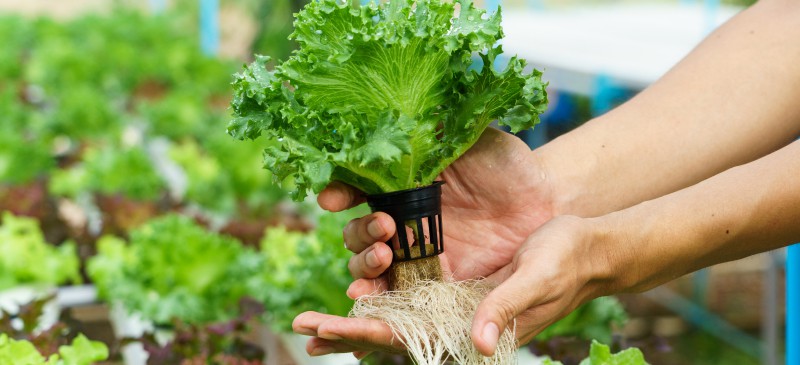This Dr. Axe content is medically reviewed or fact checked to ensure factually accurate information.
With strict editorial sourcing guidelines, we only link to academic research institutions, reputable media sites and, when research is available, medically peer-reviewed studies. Note that the numbers in parentheses (1, 2, etc.) are clickable links to these studies.
The information in our articles is NOT intended to replace a one-on-one relationship with a qualified health care professional and is not intended as medical advice.
This article is based on scientific evidence, written by experts and fact checked by our trained editorial staff. Note that the numbers in parentheses (1, 2, etc.) are clickable links to medically peer-reviewed studies.
Our team includes licensed nutritionists and dietitians, certified health education specialists, as well as certified strength and conditioning specialists, personal trainers and corrective exercise specialists. Our team aims to be not only thorough with its research, but also objective and unbiased.
The information in our articles is NOT intended to replace a one-on-one relationship with a qualified health care professional and is not intended as medical advice.
Is Hydroponics the Most Sustainable Type of Farming?
January 22, 2018

Hydroponics seem a bit like farming technology from the future. These soilless growing systems use liquid nutrient solutions to feed plants grown on stacked towers in enclosed greenhouses, where, often, everything impacting plant growth — from the light plants receive to the moisture of their roots— is controlled by computer. Hydroponics have been touted by some as the most sustainable growing system out there — thanks, in large part, to the fact that these farming systems can be built in close proximity to the cities they need to feed.
Abandoned factories and shipping containers have become home to such greenhouses, which are also vertical farms. MightyVine, a Chicago-based hydroponic tomato growing facility, built its greenhouses on former farmland that had had its topsoil removed to prepare it for development. This planned project was subsequently abandoned, leaving the land empty and not farmable. But by building a greenhouse, suddenly, the land was agriculturally viable again.
Yet, when the National Organic Standards Board announced its recent decision to allow hydroponic farming operations to be certified USDA organic, many proponents of the organic label reacted in dismay. (1) This, explains Dr. Linley Dixon, chief scientist of organic watchdog group the Cornucopia Institute, is because hydroponic growing does not support soil health. This major detail is not only one of the key principles of the organic farming movement, but it’s also one of the most important contributing factors to reversing the effects of climate change, according to a UN Food and Agriculture Organization paper. (2)
Grace Communications Foundation defines sustainable crop production as “growing or raising food in an ecologically and ethically responsible manner.” (3) In order to do this, the philanthropic organization explains, growers must show sustainable practices in several categories — from minimal pesticide use to a focus on soil health, to water conservation — with an overall goal of ensuring that these practices can be sustained over time.
In order to best judge the sustainability of hydroponics, then, it’s interesting to look into how these operations fare in various categories pertaining to sustainability.
5 Questions About Hydroponics Sustainability
1. Transport
Transport is one of the first benefits of hydroponics most proponents of the farming system will cite when arguing in favor of its sustainability. After all, hydroponic operations can be set up within urban centers, thus substantially reducing the need for transport (and the gas guzzling it requires).
Wil Hemker, a scientist and fellow at the University of Akron, notes that this is particularly interesting when you consider perishable, high-value crops, such as leafy greens.
“Not all crops can be tailored to hydroponic and container growing,” Hemker says, pointing to grains and root crops as two commodities that are better grown in the ground. But when it comes to very perishable crops, growing them locally may be the best option: not only are they less likely to suffer over the course of long transport journeys, but produce picked when ripe and eaten quickly is a better source of vitamins and minerals. (4)
“To think like a developing country and keep everything local as much as we can — that just makes a carbon cycle sense in our world,” adds Hemker.
That said, Hemker also notes that transport is not necessarily the most important factor to consider when comparing the sustainability of hydroponics with that of field-grown crops. “If you look at the carbon footprint for shipping, it’s a very small percentage of overall production,” he explains. “So even though its perception might be heavy, it’s not so much when you actually do the numbers.”
2. Energy Use
While indoor agriculture currently expends more energy than field growing, the industry is seeing a number of innovations that could close this gap. “As renewable energies are coming onboard, better materials for the greenhouses for indoor agriculture are coming onboard, and that energy load will come down,” says Hemker.
This, of course, depends on the policies of individual growers. MightyVine’s technology comes from the Netherlands, where farmers have been committed to sustainable hydroponics since 2000. “Almost two decades ago, the Dutch made a national commitment to sustainable agriculture under the rallying cry, ‘Twice as much food using half as many resources,’” writes Frank Viviano for National Geographic. (5)
In this densely populated nation (1,300 inhabitants per square mile), high production is important, and it is here that many of the major developments in hydroponic technology have occurred.
Lazarski notes that the Dutch technology his company uses takes advantage of diffused glass to make the most of sunlight, making greenhouses less demanding in energy than many others in the industry. And other innovations, specifically in using renewable energy, could help reduce the carbon load of hydroponics even further.
3. Pesticide Use
As far as pesticides are concerned, hydroponics has as all other systems beat. Whether it’s conventional pesticides and herbicides like glyphosate and dicamba, or organic alternatives like copper, hydroponic operations have less need for such treatments than field-grown crops. “In a well-maintained, well-integrated indoor horticulture practice, there are no pesticides or herbicides needed,” explains Hemker.
The enclosed environment makes it easier to keep insects out, and integrated pest management techniques are not only available but widely used among hydroponic growers. Many growers even introduce natural predators into the enclosed systems to weed out any pests.
“Every tomato greenhouse has some kind of white fly in it,” Lazarski explains, noting that in order to combat them, “You bring in these little microscopic wasps on cards. They’ve evolved to hatch, fly around and look for white fly eggs, and lay their eggs on the white fly eggs. It’s almost like an alien type horror movie on a microscopic level.”
Pesticides are always available as a last resort, but as compared to field-grown produce, where the first line of defense is pesticides, there’s no contest. And even when pesticides are used in hydroponic systems, they are never leached into the environment, as can happen with conventional or organic field-grown crops.
4. Soil Health
In addressing pesticides, however, we do touch upon one key downside of hydroponic farming: a closed-loop system may not add pesticides to the soil, but that also doesn’t contribute to soil health at all.
“Soil is such a carbon sink,” says Dixon. He adds that, in not adding organic matter to the soil, hydroponics are missing out on a key way of contributing to a solution to climate change: building the soil’s ability to draw carbon out of the atmosphere. (6)
While Hemker notes that some hydroponic growers do add back to the soil by composting, for example, Dixon believes that it’s not enough. “The problem is that’s not really cycling nutrients, because there’s no crop plant in the soil there to take up those nutrients,” he says.
Some operations work with local farmers to put their compost to good use, but the truth remains that contributing to soil health is a much more difficult endeavor for a hydroponic system than for a soil-based system.
5. Water Conservation
When it comes to water use, hydroponic growing tends to be a better bang for the ecological buck. The Dutch growers who have pioneered sustainable hydroponics have reduced their dependence on water for key crops by as much as 90 percent, reports National Geographic, and Hemker notes that, on average, 30 to 40 percent less water is needed to grow a pound of lettuce indoors than outdoors.
“We use 10 percent of the water of field-grown tomatoes,” says Lazarski of MightyVine’s operations. “And that’s because we catch all the water from the roof, and the snowmelt, we retain it in a basin, and then we pump it into the greenhouse.”
“As far as water is concerned, which is typically a much bigger concern in U.S. agriculture, hydroponics is hands-down the far better than conventional growing,” Lazarski adds.
That said, Dixon claims that a properly executed soil-based system can compete with a hydroponic system when it comes to water usage. “If you have soil that’s high in organic matter, it captures rainwater as well,” he says, noting that a “real” organic farm uses about the same amount of water as a container operation.
Looking Beyond the Utopia
Ultimately, comparing the ideal hydroponic and the ideal soil-based system is futile when so few operations of either kind are ideal. Large-scale hydroponic and container operations have the same problems as large-scale organic or conventional farms: They’re cutting corners when it comes to sustainability to be more profitable.
“In some ways it’s an unfortunate debate, because it pits people against each other who have many of the same goals in mind,” writes Dan Nosowitz for Modern Farmer. “Organic activists and small hydroponic farmers both want to grow food sustainably, at their core. But, as with most of the agricultural developments during the current administration, this decision isn’t about small farmers.” (7)
“I get this question all the time,” says Josh Lee, the farmer behind Green Top Farms, a salad delivery company that grows its microgreens in a New York City vertical farm. “What’s better: hydroponics or growing in dirt? And that’s kind of a loaded question, because you could just say, ‘What’s better: growing in dirt over here, or growing in dirt over here?’”
Lee is the first to admit that, while he was initially excited by the idea of a “utopia of beautiful green cities where all these towers are growing all these different crops,” and he currently believes that his work brings New Yorkers closer to their food, all is not perfect with hydroponics. “I’m very quick to shoot down any ideas about indoor hydroponic farming being the be-all-end-all solution to climate change woes,” he says.
The answer may, in fact, reside in the coexistence of both systems. Not only can hydroponic and vertical farming systems keep people closer to their food (both in mindset and in geographical proximity), but the promise of innovations within the industry lends promise to the idea of a sustainable farming future: lighting conditions can be changed and the mineral makeup of nutrient solutions can be modified, for example, to improve the nutritional makeup of certain fruits and vegetables without needing to turn to genetically modified products.
“You don’t have those engineering opportunities in the soil,” says Hemker.
Lee’s utopia of green cities may not be the answer, but it seems we can’t take hydroponic farming out of the equation when it comes to developing a truly sustainable farming solution for the future.
This story comes from OrganicAuthority.com and is written by Emily Monaco. Organic Authority obsessively covers the latest trends and news in food, seasonal recipes, nutrition, wellness, natural beauty, and more. Organic Authority has all the tips and expert advice you need for delicious good living.








